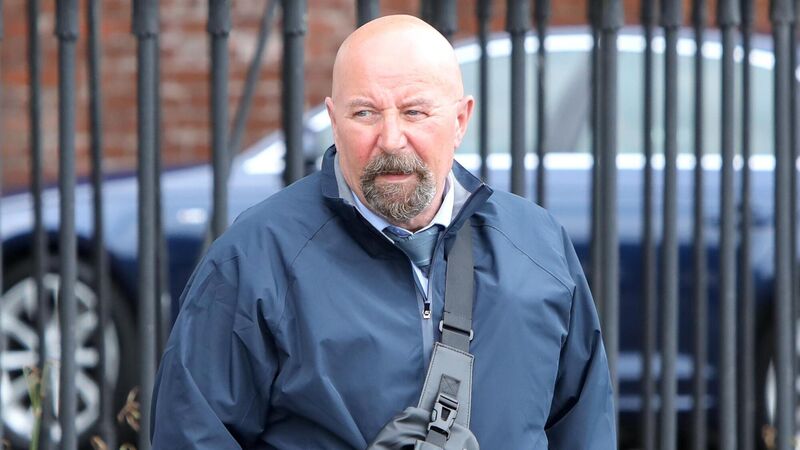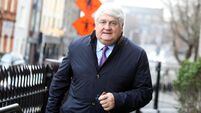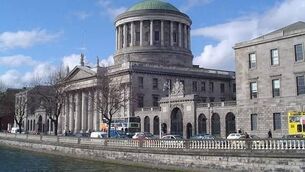Juror's illness leads to adjournment of Noel Long trial

Noel Long is accused of murdering Nora Sheehan, whose body was found in June 1981. Picture: Collins Courts.
A juror's illness has led to the adjournment of the cold case trial of a Cork man charged with murdering a mother-of-three, whose body was found dumped in a wooded area 42 years ago.
UK forensic scientist Dr Jonathan Paul Whitaker, who developed a DNA profile from material recovered from the body of victim Mrs Nora Sheehan, had begun to give his direct evidence in the trial of Noel Long on Friday when a juror took ill.
Adjourning the trial this afternoon, Mr Justice Paul McDermott told the remaining ten jurors that as one of their colleagues was unwell, he would adjourn the case until Monday to give that ill juror an opportunity to recover.
Last Tuesday, the jury of 12 was reduced to 11 when a juror handed the judge up a note which led to him being discharged. The trial judge told the remaining jurors that as a result of information having been conveyed to him it was appropriate that their fellow juror would no longer serve and that they would continue to hear the evidence in the case as a jury of 11.
Noel Long (74) with an address at Maulbawn, Passage West, Co. Cork has pleaded not guilty to murdering 54-year-old Nora Sheehan between June 6 and June 12, 1981 at an unknown place within the State. Her body was found by forestry workers at The Viewing Point, Shippool Woods in Cork six days after she went missing.
The jury has heard that the pathologist who carried out the post-mortem on Mrs Sheehan found bruising in the anterior wall of her vagina and it showed the presence of spermatozoa. Dr Robert Dermot Coakley conducted the post-mortem on Mrs Sheehan on June 13, 1981 but died weeks after carrying out the examination in August 1981.
Evidence has also been given that material recovered from Mrs Sheehan had to be sent to the UK in 2008 to generate a DNA profile, as Ireland lacked the techniques to interpret low amounts of DNA at the time.

Dr Jonathan Paul Whitaker from Forensic Science Services (FSS) in the UK told Mr Brendan Grehan SC, prosecuting, that he has specialised in DNA profiling for over 30 years. The witness said he had prepared a report in the case on May 9, 2022 which contained information from an evaluation of work done in 2008 and also comparison work carried out in May 2022 on foot of an email from Dr Kristen O'Connor, which had included a profile of a black beanie hat.
Dr Kristen O'Connor from Forensic Science Ireland has already testified that she received five items belonging to Mr Long for DNA on December 1, 2021 and one of these was a black beanie hat.
Explaining DNA to the jury, Dr Whitaker said it's a chemical found in all cells of the body including skin, semen, blood, sweat and muscle, which determines how a person looks and acts. He said DNA profiling was first introduced into casework in 1988 or 1989 and that the first DNA tests introduced were quite basic and that a blood-stain the size of a €2 coin would have been required to generate a DNA profile.
Asked by Mr Grehan at what point in time it was possible to tell whether a DNA profile was male or female, Dr Whitaker said the sex of the contributor has been told through DNA markers since 1996.
Low copy number (LCN) is a DNA profiling technique, the witness said, which was developed by FSS in the UK around 1999 and has been applied to forensic cases since 2002 involving a minute blood speck.
Dr Whitaker said the biggest challenge mounted to LCN DNA came in 2007 at the trial of Sean Hoey in relation to the Omagh bombing.
"The judge had some issues with the validation of the technique and as a result, there was a temporary suspension of the test in the UK and Wales and a review of the methodology," he explained.
In December 2007, then 38-year-old Sean Hoey, from Jonesborough, south Armagh, was found not guilty of the murder of 29 people in the 1998 Omagh bombing by Mr Justice Weir at Belfast Crown Court. Mr Hoey had maintained his innocence throughout the trial.
The witness told the jury that before the Hoey verdict was announced, Professor Brian Caddy undertook a review of LCN to oversee the validity and reliability of the test. The Caddy review concluded in a report in April 2008 that there was no reason to believe there was any unreliability in LCN DNA testing, he said.
Since 2008, the expert witness said developments in DNA profiling have changed hugely and FSS adopted a recommendation from the Caddy review with a quantification step introduced into LCN methodology.
Dr Whitaker said the vaginal swab slide recovered from the body of Mrs Sheehan was tested in a laboratory in Birmingham in 2008 and his opinion was peer-reviewed by another scientist and no disagreements were noted.
Dr Brid Martina McBride, from Forensic Science Ireland (FSI), told the jury on Thursday that she sent a vaginal swab slide recovered from the body of Mrs Sheehan to Dr Whitaker in November 2008 for DNA profiling as he was an expert in this area.
The trial broke for lunch at 1.20pm on Friday, but when the jurors returned to the court after 2pm they were told by the judge that one of their colleagues was not well and that the trial would be adjourned until Monday.
The trial continues on Monday before the judge and a jury of seven men and four women, when Dr Whitaker will continue giving his direct evidence.
In his opening address, Mr Grehan told the jury that Dr Whitaker had developed a DNA profile from semen recovered from the body of Mrs Sheehan. In November 2021 he said material from Mr Long was obtained by gardaí, which was analysed in the forensic science lab.
"Results from their analysis were sent to Dr Whitaker and he will say it matched the semen recovered from Mrs Sheehan's vagina. Using the calculation tools, the possibility that it originated from someone other than Mr Long is one in 20,000 provided they are unrelated to him," said the barrister.











